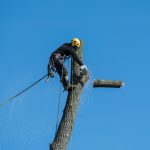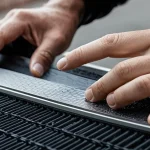Step-by-step assembly of a DIY smart watering system for UK greenhouses
Building a DIY smart irrigation UK system for your greenhouse begins by gathering essential tools: tubing, drip emitters, a water pump compatible with UK mains, moisture sensors, and a smart controller. For a successful self-watering setup, also consider waterproof connectors and timer interfaces designed to withstand humid greenhouse conditions typical in the UK.
Start by mapping your greenhouse layout; this helps optimize placement of drip lines and soil moisture sensors. Install the tubing network first, attaching it securely with clips or stakes to prevent displacement. Connect drip emitters near plant roots to ensure targeted watering, a key feature of greenhouse automation tailored to UK horticultural needs.
In the same genre : Effective methods to protect uk carrots from root fly infestations
Next, wire the moisture sensors and link them to the smart controller, configuring thresholds to match UK soil types and seasonal moisture variations. Many UK greenhouses require adjustments for cooler, damper climates to avoid overwatering.
Key tips include choosing components rated for UK climate and ensuring compatibility with local water pressure. Regular monitoring during the initial phase helps refine automation settings for best results. This stepwise approach guarantees a robust, efficient build greenhouse watering system that saves water and promotes plant health throughout the year.
In parallel : Discover exceptional fencing options to enhance your tadworth garden
Step-by-step assembly of a DIY smart watering system for UK greenhouses
Building a DIY smart irrigation UK system demands careful attention to the specific climate and greenhouse conditions found across the UK. After assembling an appropriate tubing network and placing moisture sensors, focus on integrating the self-watering setup components designed for seamless greenhouse automation.
Begin by securely connecting your water pump to the main supply, ensuring compatibility with typical UK mains voltage and pressure specifications. Next, install drip emitters close to plant roots for targeted watering, crucial in UK greenhouses where excess moisture can cause fungal issues. Correct positioning prevents overwatering while promoting healthy growth.
Connect moisture sensors to your smart controller, calibrating thresholds based on UK soil characteristics and seasonal changes. This precision lets the controller automate irrigation, adjusting water delivery according to real-time soil moisture data. It is vital to test sensor responsiveness over several days to fine-tune settings accurately.
Finally, configure timer interfaces tailored for UK daylight cycles and season lengths, which vary significantly year-round. This timing optimization supports efficient irrigation during peak growth periods while conserving water in cooler months. Following these detailed steps ensures your build greenhouse watering system suits UK-specific horticultural needs and delivers consistent, automated watering with minimal intervention.
Step-by-step assembly of a DIY smart watering system for UK greenhouses
Achieving an efficient self-watering setup in your UK greenhouse begins with selecting tools tailored for local conditions. Essential materials include durable tubing compatible with UK water pressure, drip emitters optimized for cooler, humid environments, and moisture sensors with proven sensitivity to British soil types. These components form the backbone of any reliable DIY smart irrigation UK system.
Start by laying out the tubing thoughtfully to cover all plant zones without overlapping water delivery. Secure pipes using heavy-duty clips designed to withstand UK greenhouse humidity, preventing displacement. Next, attach drip emitters near root zones; this focused watering reduces excess moisture issues common in UK gardens.
The core of your system is the greenhouse automation controller. Connect moisture sensors calibrated for UK seasonal moisture fluctuations to this control unit. This allows precise watering triggers—activating irrigation only when soil moisture drops below target thresholds. Calibration ensures your system avoids overwatering in damp months and compensates during drier periods.
Finally, test the entire system over several days under varying UK weather conditions. Adjust sensor thresholds and drip rates accordingly. Following this sequence ensures your build greenhouse watering system delivers tailored, efficient irrigation to meet the distinct climate challenges of UK greenhouses.
Step-by-step assembly of a DIY smart watering system for UK greenhouses
Assembling a DIY smart irrigation UK system requires precise alignment of tools and climate-specific adaptations. Begin by confirming your water pump and tubing meet UK mains pressure standards to prevent flow inconsistencies. Use durable connectors and clips rated for humid UK greenhouse environments to secure tubing and drip emitters close to plant roots, supporting the fundamental principle of build greenhouse watering system focused on targeted irrigation.
When integrating your self-watering setup, install moisture sensors at varied soil depths and locations. This provides your greenhouse automation controller with nuanced soil moisture data, crucial for adjusting watering schedules according to soil profiles typical in UK greenhouses. For example, clay soils retain moisture longer, requiring sensor thresholds to be set differently than sandy soils.
Next, wire your sensors into the smart controller, ensuring connections are waterproof and shielded from interference common in enclosed greenhouse spaces. Program the controller with UK seasonal data to refine irrigation timing, balancing water use effectively throughout wetter winters and drier summers. Testing the system over multiple days under fluctuating weather is vital. This practice lets you calibrate drip emitter flow rates and sensor thresholds precisely, ensuring your DIY smart irrigation UK adapts to actual conditions and sustains plant health reliably.
Step-by-step assembly of a DIY smart watering system for UK greenhouses
A successful DIY smart irrigation UK system starts with assembling quality, climate-appropriate components. Begin by selecting tubing rated for UK water pressure to ensure consistent flow. Use clips and connectors made for humid greenhouse environments to secure the tubing firmly, preventing leaks or displacement. Position drip emitters precisely near root zones; this focused delivery is critical for a build greenhouse watering system that minimizes water waste in the UK’s often damp climate.
Integrate moisture sensors at varying soil depths to capture accurate moisture data across your greenhouse. Connect these sensors to a smart controller designed for greenhouse automation, enabling real-time irrigation adjustments based on soil conditions. Calibration is key—set sensor thresholds to reflect UK soil types and seasonal moisture levels, avoiding overwatering during wet seasons and compensating for dryness in summer.
For electrical connections, ensure waterproofing and proper insulation to protect sensitive components from humidity. After assembly, conduct several days of testing under typical UK weather conditions. This lets you refine drip rates and sensor settings for optimal performance. Taking these precise steps ensures your self-watering setup functions reliably, delivering efficient irrigation tailored to UK greenhouse needs.
Step-by-step assembly of a DIY smart watering system for UK greenhouses
Creating an effective DIY smart irrigation UK system involves selecting components specifically suited to UK greenhouse environments. Begin with tubing rated for UK water pressure to maintain flow reliability. Use robust connectors and clips designed to resist humidity typical of UK greenhouses, which helps prevent tubing displacement or leaks. Position drip emitters strategically near plant root zones, ensuring focused water delivery that supports healthy growth without excess moisture buildup common in UK climates.
Next, integrate moisture sensors capable of detecting subtle changes in soil moisture particular to UK soil types. These sensors feed accurate data to your greenhouse automation controller, which adjusts watering schedules dynamically. Calibration is crucial—set sensor thresholds to respond appropriately to seasonal UK moisture variations, helping your self-watering setup avoid overwatering during wet spells and compensate during drier periods.
When assembling the system, waterproof all electrical connections to withstand greenhouse humidity and possible condensation. Test the entire setup across different UK weather conditions for several days, fine-tuning drip rates and sensor response to ensure efficient irrigation. Methodical assembly and calibration ensure the build greenhouse watering system functions reliably, conserving water while promoting plant health year-round.










